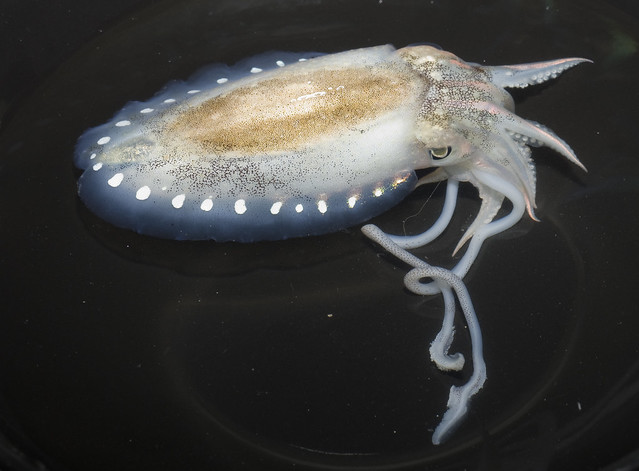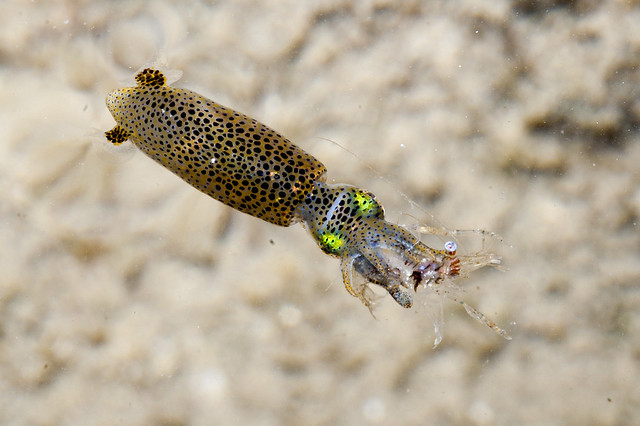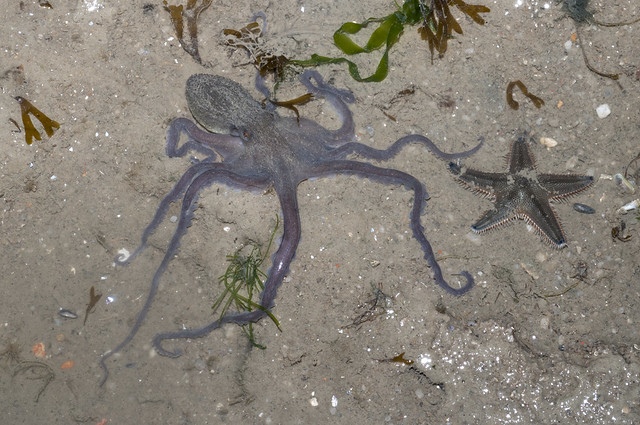 |
| The Slender seagrass octopus is hardly bigger than a sea star but is commonly seen on Changi and other Northern shores. |
Here's a glimpse at what you can see, if you look carefully. Most are only active at night, and many can change their colours and patterns to blend in with their surroundings.
Many different kinds of 'sotong' or squids and cuttlefish find shelter among the seagrass meadows. They are not fish! They belong to the same group as snails and clams. Unlike them, squids and cuttlefishes are jet-propelled predators. Squids and cuttlefish squirt a jet of water to zoom off in the opposite direction. They can move in any direction, but move fastest backwards.
 |
| Glittering cuttlefish |
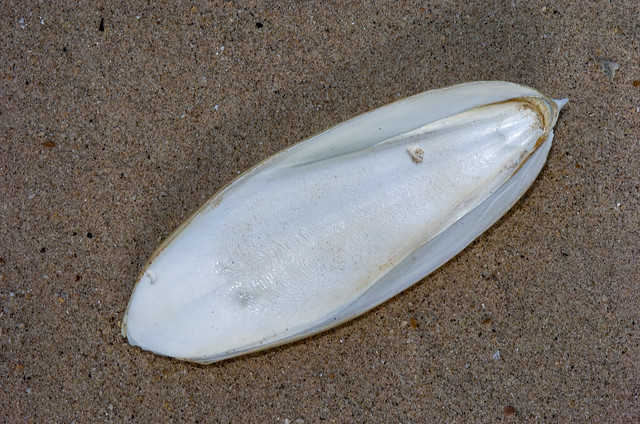 |
| Cuttlebones are often seen washed up on the shore. Cuttlebones are sold in pet shops as a source of calcium for caged birds. |
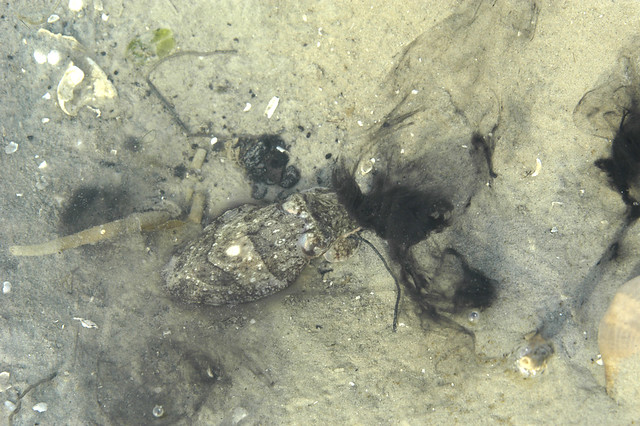 |
| Curvespine cuttlefish |
The Pygmy squid has a glue gun on its butt. This is how it lurks among the meadows, with its butt stuck on a seagrass blade while its deadly tentacles are ready to snatch nearby prey. It can catch and eat shrimps half as big as itself! This tiny creature doesn't get any bigger than about 1cm long.
Bobtail or bottletail squids are generally rather spherical with a pair of rounded fins that make them look a little like an aquatic version of Dumbo the Flying Elephant!
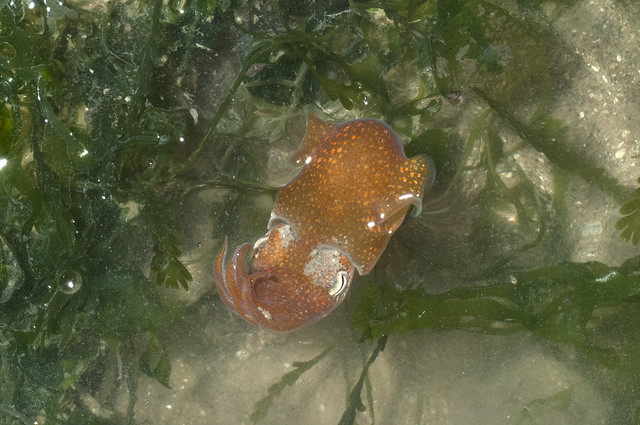 |
| Bobtail or bottletail squid |
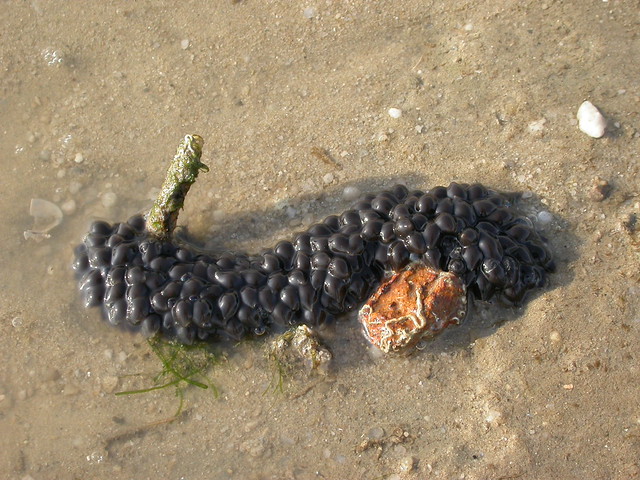 |
| Egg capsules attached to a tubeworm tube. |
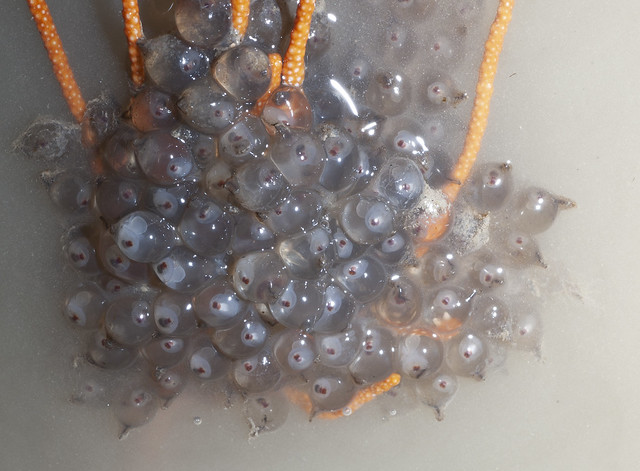 |
| Attached to a sea fan. |
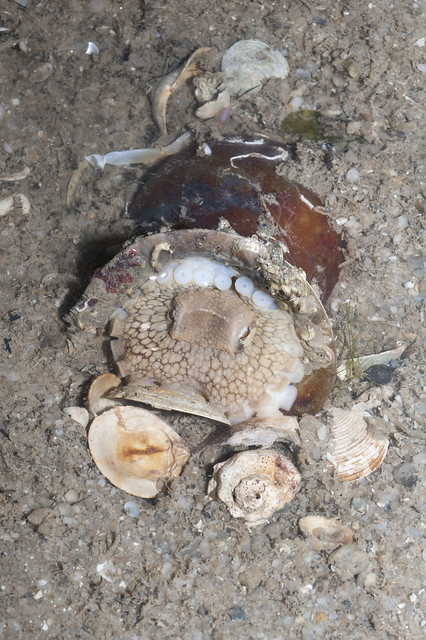 |
| Big-head seagrass octopus hiding in a pot. |
 |
| This Big-head seagrass octopus appears to be carrying strings of eggs. |
The arms are joined together near the head with webbing. An octopus uses this webbing like a net. For example, to envelope a little mound of rubble where some small titbit might be hiding. When the prey attempts to escape, it is literally surrounded by octopus! Prey is killed with a bite of its sharp, hard beak. It is often then hauled back to the octopus' den for a leisurely meal.
 |
| Slender seagrass octopus |
Don't touch the octopus!
Octopuses bite! Although octopuses have a hard beak, they don't chew their food. Digestive juices are injected into the prey which soften the tissues. Some can inject a toxin with their beaks. The tiny Blue-ringed octopus (Hapalochaena maculosa) - which has a toxin deadly to humans - is recorded for Singapore, but not commonly seen. Still, it is best to avoid touching any kind of octopus. Especially small ones.
Where can I see these animals in Singapore?
They are most common in seagrass meadows on our Northern shores, e.g., Changi, Pasir Ris. One of the best ways is to join intertidal walks by NParks at Chek Jawa, Pulau Ubin. Or check out these opportunities to explore our shores through walks, or during volunteer work for our shores.
Here's more about Singapore's seagrass meadows and how you can visit them and make a difference for them.
Learn more about Singapore's squids and cuttlefishes and octopuses on the wild fact sheets on wildsingapore.
This article is written for Celebrating Singapore Shores as part of International Year of the Reef 2018.

